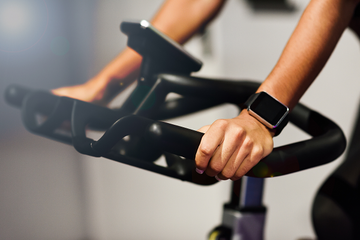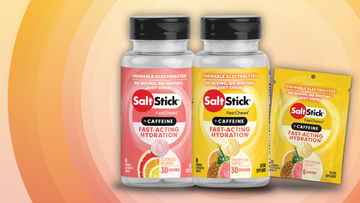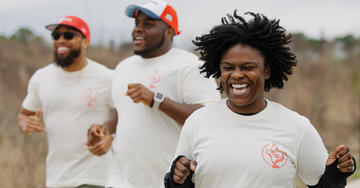With the Ironman World Championship behind us, most athletes have entered the off-season and begun to reduce the intensity and duration of their workouts. Often, that means breaking out the stationary bike. Cycling indoors is often logistically easier and also safer than outdoor cycling. You can likely name at least one athlete whose season ended prematurely because of a crash on the side of the road. Setting up a stationary trainer can help avoid this possibility entirely. Coupled with the growing popularity of apps like Zwift and newer hardware with greater options for feedback and quantitative performance analysis, it’s easy to see why some athletes prefer indoor cycling so much, they rarely—if ever—train outdoors. If you plan to train inside, be sure to take into account the changing nature of your workout in order to plan effectively. Here are four tips for indoor cycling success.
Tip 1: In most occasions, indoor cycling is more challenging than cycling outdoors
When riding outdoors, perceived effort is often lower due to the ability to coast in certain spots, as well as the distraction of changing scenery. But on a trainer, athletes must pedal consistently throughout the workout, eliminating the ability to coast and upping the overall intensity. Some
estimates find that energy expenditure is up to 50 percent greater indoors than outdoors.
What this means: It’s generally correct to assume that you only need 60-75 minutes on the indoor trainer to account for 90-100 minutes of outdoor riding. Thus, most indoor sessions can be kept to 1-2 hours and feature some type of changing intensity, such as intervals or tempo efforts.
Tip 2: Indoor cycling will cause you to sweat … a lot
When riding outdoors, no matter the temperature, air flow helps sweat evaporate, which is an essential step in the cooling process. Inside, this air flow is greatly reduced or completely nonexistent, so the sweat often just hangs on the skin, reducing the cooling effect. Whether or not this means you actually sweat more indoors depends on your unique circumstances, but at a minimum, many experts
believe your sweat rate inside is at least equal to what it would be outside.
What this means: Even a two percent reduction in your body weight from fluid loss can begin to impair performance, and three percent is considered to do so “significantly.” Beyond that, and many experts believe an athlete is putting him or herself in a potentially dangerous situation. Of course, sweat contains more than just water, and athletes will need to replace adequate levels of electrolytes as well, in particular, sodium, potassium, magnesium and calcium. To see this in action, consider the results of a small double-blind, placebo-controlled
2015 study, which found measurable performance improvements in athletes who replaced adequate amounts of sodium compared to athletes who did not. Sports drinks may help, but for workouts longer than 60 minutes, it may be beneficial to supplement with a dedicated electrolyte product such as SaltStick. We suggest consuming one to two SaltStick Caps per hour while drinking to thirst. SaltStick is uniquely formulated to closely resemble the electrolyte profile lost during activity: Each capsule contains 215 mg sodium, 63 mg potassium, 22 mg calcium and 11 mg magnesium. Chewable
SaltStick Fastchews and concentrated
SaltStick Elixalyte are also great options for supplementation. Check out our usage guides
here for more details.
Tip 3: Indoor cycling can keep you static for long periods of time
Although, aerodynamically speaking, the ideal position remains fairly unchanged for athletes cycling outdoors, most of us will change positions quite often to account for hills, stops, starts, turns and other changes in terrain. None of this exists indoors, meaning an athlete could find him or herself in a relatively stable position for hours on end.
What this means: Although the difference isn’t great, training for a full season without heading outdoors can result in small muscular changes that underemphasize certain muscle groups, like the core, which helps control balance. To lower the impact, try to add in a few standing sessions to boost the variety of your workouts.
Tip 4: Indoor cycling can be isolating
At a certain point, unless you’re lucky enough to train with a team, endurance sports will require you to spend lots of time by yourself. While some athletes prefer the solo nature of the sport, finding it refreshing to be alone for long periods of time, others thrive off group energy. If you find yourself in the latter category, indoor cycling can get old quickly.
What this means: If you do the same 4-5 workouts year-round, indoor cycling will become mentally fatiguing for even the toughest of athletes. Use the off-season as a chance to change things up and join a group class at your local gym or try experimenting with programs like Zwift, which have a social element incorporated. When the season picks up again next year, you’ll have more than enough time to sweat it out solo.








